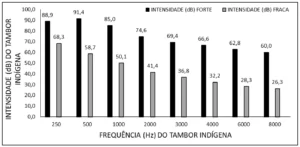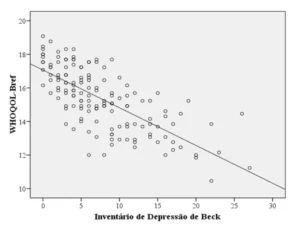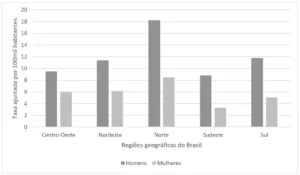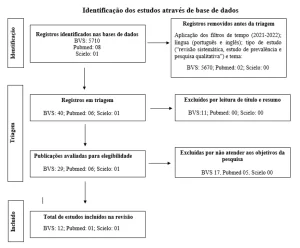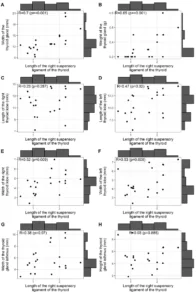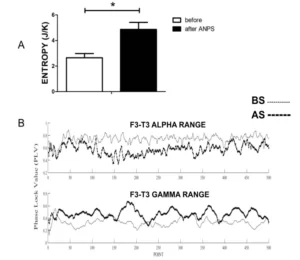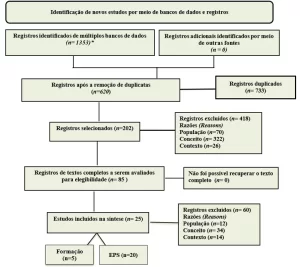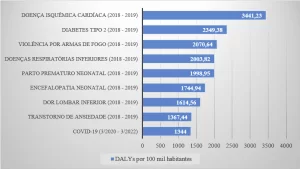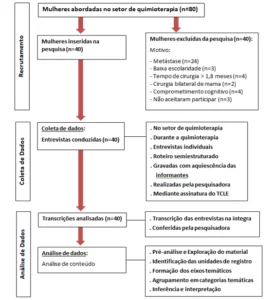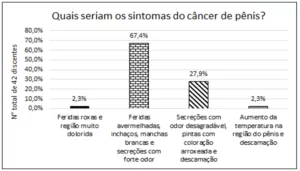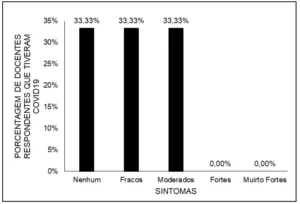INTEGRATIVE REVIEW
LIMA, Cindy Ferreira [1], SILVA, Adriana Carmo [2], SILVA, Letícia Graça Gomes da [3], FERREIRA, Fernanda Marçal [4], NARCHI, Nádia Zanon [5]
LIMA, Cindy Ferreira. Et al. The perception of being a mother and living with HIV: a literature review. Revista Científica Multidisciplinar Núcleo do Conhecimento. Year. 07, Ed. 05, Vol. 05, p. 05-42. May 2022. ISSN: 2448-0959, Access link: https://www.nucleodoconhecimento.com.br/health/living-with-hiv
ABSTRACT
The discovery of seropositivity by the Human Immunodeficiency Virus (HIV) brings with it a series of significant biopsychosocial repercussions that affect the context of people’s lives. Being a woman in a patriarchal society entails enormous challenges. When we associate HIV infection with this, it is possible to observe the occurrence of issues related to stigma and prejudice. The topic of motherhood is common when we think about the social role of women, however, the feminization of infection also has repercussions in this scenario. The desire for motherhood and the experience of sexuality are marked by important sociocultural issues, regardless of serological status. Based on this, the following guiding question was elaborated: How do Brazilian women living with HIV perceive motherhood and the possibility of having children, according to the published literature? Through this question, the objective of this study was to know the perception of women living with HIV about motherhood and the possibility of having children, in the Brazilian context, from the published literature. As a methodology, an integrative literature review was adopted, including articles in Portuguese, English and Spanish, published between 2006 and 2018, in the LILACS, SciELO, SCOPUS, SCIENCEDIRECT and WEB OF SCIENCE databases. In the search for articles, 311 manuscripts were identified, of which 28 were included, following the selection criteria: Studies composed of seropositive women of reproductive age, undergoing medical follow-up, with a theme related to motherhood. The analysis of the results allowed the definition of five thematic categories: Socioeconomic overview of the sample; Family Relationship; Vulnerabilities associated with a positive HIV diagnosis; Feelings in relation to the experience of motherhood; HIV positive women and induced abortion. Based on the results, we consider that the perception of motherhood for women living with HIV is permeated by ambiguous feelings such as fear and hope, and that the possibility of having children is permeated by doubts. Insufficient knowledge about the infection and inadequate professional support contribute to women’s insecurity in their reproductive choices. Up-to-date, comprehensive and welcoming health care can promote autonomy and security for HIV-positive women regarding their choices and reproductive health.
Keywords: Human Immunodeficiency Virus, Sexuality, Women, Reproductive Health, Literature Review.
1. INTRODUCTION
Infection with the Human Immunodeficiency Virus (HIV) is the subject of several educational campaigns on prevention and antiretroviral therapies (ART) offered free of charge by the Unified Health System (SUS). Despite this, its epidemic remains a public health problem in Brazil (WOLFGANG; PORTINARI; FERREIRA, 2017).
Approximately 37 million people live with the Human Immunodeficiency Virus (HIV) in the world, more than half of them women (WILSON et al., 2020), mostly young, heterosexual and in stable affective-sexual relationships (RAHMALIA et al., 2020). In this scenario, the feminization of the infection is something of concern (COMINS et al., 2020), especially when we analyze that most preventive measures and virus tracking are linked to pregnancy (KISIGO et al., 2020).
The topic of motherhood is common when we think about the social role of women, however, the feminization of infection also has repercussions in this scenario. The desire for motherhood and the experience of sexuality are marked by important sociocultural issues, requiring the reflection that living with HIV does not cancel out the desire to be a mother (KISIGO et al., 2020). From this perspective, the prevention of Vertical Transmission (VT) is a challenging issue that demands global health actions, in which social, cultural and gender dimensions are considered, since they are transversal to HIV infection (CABIESES; SEPULVEDA; OBACH , 2020).
Active listening and welcoming of women living with HIV (WLHIV) about their doubts and anxieties related to pregnancy and motherhood can minimize the risk of VT as well as harm to the health of the binomial. In this sense, the qualification of professional assistance is essential for positive outcomes in pregnancy, childbirth and birth in this population (MPINGANJIRA et al., 2020).
The professional experience in health services has empirically evidenced that even in institutions specialized in monitoring and treating WLHIV, sexual and reproductive health is neglected and issues related to pregnancy and motherhood are veiled. The work of professionals is directed towards the prevention of transmission to third parties and the medicalization of the individual to the detriment of comprehensive care and the transversality of the sexual and reproductive health theme.
The realization of the present review study was raised to support the experiences of the first author in the construction of her doctoral project, and aims to know, from the published literature, the perception of women living with HIV about motherhood and the possibility of generate children, in the Brazilian context. To reach the objective, the following guiding question was adopted: How do Brazilian women living with HIV perceive motherhood and the possibility of having children, according to the published literature? We seek, from the synthesis of data present in the literature, to make considerations, with the intention of highlighting the theme, which even after 40 years of a pandemic, remains so current. The approach to this theme aims to contribute to the strengthening and humanization of health care provided to MVHIV, who still suffer from the presence of stigma and prejudice, even within the health services.
2. DEVELOPMENT
2.1 METHODOLOGY
This is an integrative literature review structured based on the recommendations of the Prisma Statement (LIBERATI et al., 2009), and the protocol proposed by Morgan et al (2016).
The survey of articles included studies with qualitative methodology in Portuguese, English and Spanish, published between 2006 and 2018, whose participants were women of reproductive age, between 15 and 49 years old (ORGANIZAÇÃO MUNDIAL DA SAÚDE, 2009), HIV positive and , under medical supervision. The databases investigated, defined by the scope of publications in the Brazilian academic scenario, were the Latin American and Caribbean Literature on Health Sciences (LILACS), the Scientific Electronic Library Online (SciELO), Science Direct, Scopus and the Web of Science. The survey was carried out between September 2019 and February 2020, using the descriptors “HIV/Aids”, “Vertical Transmission”, “Pregnancy”, “Maternity” and “Qualitative”. Only the Boolean operator AND was used together with the descriptors, in order to identify the relationship between them.
Table 1. Associations of descriptors used in the initial search strategy for articles and results by database. São Paulo, 2020.

In the initial search, which aimed to verify the breadth of the topic, 1433 articles were identified. Subsequent searches aggregated the descriptor “qualitative” in all combinations, in order to obtain only studies with this approach.
Table 2. Associations of descriptors used in the search strategy for articles with a qualitative methodological approach and results by database. São Paulo, 2020.
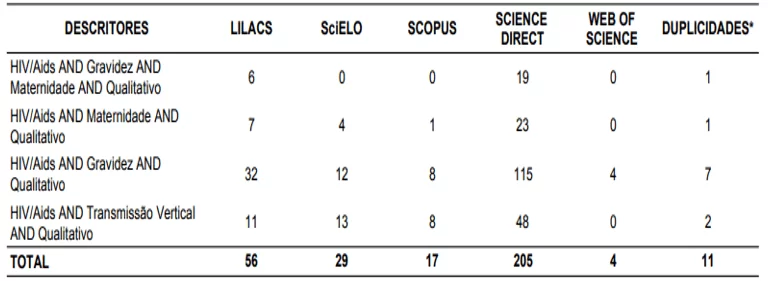
To select the studies, reviewer 1 elaborated the search strategies, as well as the order of search terms, which were validated by reviewers 2 and 3. In this step, reviewers 1 and 2 performed the reading and analysis of the titles and abstracts of the retrieved articles. After insertion of the qualitative descriptor, 311 articles underwent an initial screening and 239 studies were excluded due to duplicity and/or inconsistency with the objective of this review and its inclusion criteria. Continuing, 72 articles were submitted to refined analysis until the composition of the final sample.
Figure 1. Flowchart of the selection process of articles for the integrative review, including the description of the steps followed and the analysis adopted in each phase. São Paulo, 2020.
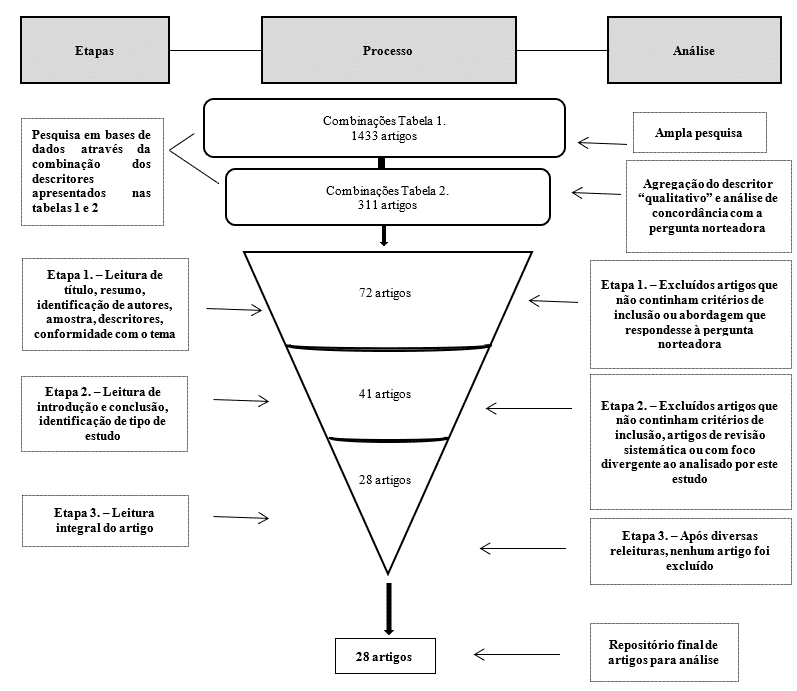
In step 1, the 72 articles were analyzed by title and abstract, identifying authors, sample, descriptors and similarity with the theme of this research, excluding those that did not correspond to the proposed objective.
In step 2, reviewers 1 and 2 analyzed the introduction and conclusion of 41 articles, excluding review studies, as they did not contain primary data and those that did not or superficially/secondarily approached the topic of interest.
For step 3, 28 articles remained submitted to full reading by both reviewers from the previous step, with emphasis on the results presented and direct relationship with the objective of this investigation. Studies that generated disagreement at this stage were submitted to reviewer 3 for analysis. Doubts were discussed and inconsistencies or objections resolved by consensus, ending the process with 28 articles making up the final sample (Table 1).
Table 1. Description of studies included in the integrative review, according to year of publication, country in which the research was developed, authors, objectives and type of study. São Paulo, 2020.
| Author | Country | Goals | Kind of study | Main conclusions |
| (SILVEIRA; SILVEIRA; MÜLLER, 2016) | Brazil | To assess the quality of life of pregnant women with positive serology for HIV through the Target Quality of Life (HAT-QoL) instrument. | Cross-sectional study. | Quality of life has been increasingly used as an assessment of clinical outcome, the results of this study contribute to the establishment of interventions based on the needs of pregnant women living with HIV. |
| (MOURA; LIMA; SILVA, 2012) | Cuba | Knowing sexual aspects and reproductive perspectives of women with HIV/AIDS and verifying what has changed with seropositivity. | Field research. | Improve the understanding of the sexual and reproductive aspects of WLHIV/AIDS, which go through specific care from preconception, through prenatal care, delivery and puerperium, to consider the real needs of these women. |
| (NASCIMENTO et al., 2013) | Brazil | To describe the desire for motherhood in the face of the diagnosis of acquired immunodeficiency syndrome; discuss the knowledge, the desire for motherhood of women about HIV and the role of health professionals in assisting these women. | Descriptive study. | Nurses need to improve nursing care for these women, since they require full monitoring to reduce the risks of vertical transmission of the virus and to have a better quality of life. |
| (PREUSSLER; EIDT, 2007) | Brazil | To identify adversities experienced by mothers when facing binomial pregnancy and HIV/AIDS. | Descriptive study. | It was evident that pregnancy, with HIV/AIDS, represented unique moments in their lives, triggering several existential challenges. |
| (MONTEIRO et al., 2016) | Brazil | To understand the relationship between AIDS-related stigma and the social processes that result in pre-diagnosis discrimination among pregnant women living with HIV/AIDS in Rio Janeiro, Brazil. | Cross-sectional study. | The findings of this study allow us to reflect on the dynamics of the production of stigma associated with HIV among women and offer some clues on how to deal with it. Combat the factors that feed it, such as socioeconomic inequality and gender inequality, and taboos and prejudices related to sexuality, and develop specific individual actions to help women deal with living with HIV/AIDS without restrictions. |
| (PINTO et al., 2017) | Brazil | To examine, among adolescent mothers living with HIV, the central themes referring to the MC proposed by Stern (1997). | Descriptive – exploratory study. | The experiences reported by adolescent mothers seem to have been, in general, positive for the psychic restructuring required by motherhood. It was found that these mothers showed significant psychological suffering when they found out they were infected with HIV, a condition still marked by significant stigma. In addition, this reality generated anxiety and fear of transmitting the virus to the baby, triggering a set of special care, both in relation to their attitudes as caregivers and in the relationship with the people who make up their support matrix. |
| (VASCONCELOS et al., 2006) | United Kingdom | To apprehend the feelings experienced by pregnant women with HIV. | Descriptive – exploratory study. | The findings of this study provide a better understanding of the dynamics of feelings experienced by pregnant women living with HIV. In the case of the participants, although the pregnancy of some was not planned, the meaning of the child for them is unmistakable: it represents the fight against death and the hope of continuing life. |
| (GONÇALVES et al., 2013) | Brazil | Understand the feelings of women with HIV, emphasizing the meaning of being pregnant and unable to breastfeed, as well as the experience related to the procedures used to inhibit lactation. | Descriptive study. | The women were in emotional and social conflict due to uncertainty about the transmission of the disease to the child and the social stigma of being carriers of the virus. |
| (ZIHLMANN; ALVARENGA, 2015) | Colombia | Knowing how WLHIV/Aids give meaning to their reproductive decisions, as well as characterizing their unconscious desire. | Oral history. | The interviewees’ speeches showed contradictions and their reproductive decisions are guided by an unconscious logic, and pregnancy, in this context, has the function of narcissistic restoration whose objective is to generate a seronegative offspring. Another contradiction is that the interviewees evaluate the reproductive decisions of other HIV-positive women as “madness” or “irresponsibility”, while justifying their own decisions, seeking to take responsibility for their unconscious desire. |
| (GALVÃO; CUNHA; MACHADO, 2010) |
Brazil | To apprehend the dilemmas and conflicts revealed by women who gave birth during the HIV/AIDS infection. | Descriptive study. | Doubts, uncertainties, generate anxiety and trigger in these women-mothers the overprotection of the child born under exposure to HIV. Another fact observed in this study was the women’s lack of knowledge about the ideal time to conceive and the care needed to control HIV infection during prenatal care, childbirth and the postpartum period. Finally, the following can be understood: women, especially those who were pregnant while HIV positive, remain apprehensive during the mothering process. |
| (MOURA; PRAÇA, 2006) | Brazil | Identify the expectations of the HIV-positive pregnant woman regarding the pregnancy and the child she is having; to verify if her expectations generate actions while experiencing this phase of the pregnancy-puerperal cycle. | Descriptive study. | It is concluded that there is a need to implement health guidance aimed at women with a focus on mother-to-child transmission of HIV/AIDS. |
| (NEVES; GIR, 2006) | Brazil | To identify the beliefs that influence the adherence of mothers with HIV to prophylactic measures of vertical transmission. | Descriptive study. | The identification of beliefs and the understanding of how they influence human behavior in the face of a health problem can determine the action of the services and the way in which this action should be processed. |
| (SPINDOLA et al., 2015) | Brazil | To identify the perception of pregnant women living with HIV about motherhood and to know the expectations and feelings experienced by HIV-positive pregnant women. | Descriptive study. | For pregnant women living with HIV, motherhood is a positive experience in their lives. Nurses must be sensitive to the care demands of this group, aware of their role in health care and prevention of possible complications that may affect the mother and her baby. |
| (TEIXEIRA et al., 2017) | Estados Unidos | To analyze the factors associated with the occurrence of pregnancies after the diagnosis of HIV infection. | Cross-sectional study. | The occurrence of pregnancies after the diagnosis of HIV infection does not indicate the exercise of the reproductive rights of WLHIV/ AIDS, as these pregnancies occurred in contexts of great vulnerability. |
| (FERNANDES et al., 2017) | Brazil | To investigate how women experience the diagnosis of Human Immunodeficiency Virus (HIV) infection during prenatal care and identify coping strategies to deal with seropositivity. | Descriptive study. | Nurses’ support is of fundamental importance, so that they can understand the life context of these women and adapt care to their singularities, achieving better quality in nursing care. |
| (MATÃO; MIRANDA; FREITAS, 2014) | Brazil | To know the social representations of women who are aware of their HIV-positive status in relation to motherhood. | Exploratory study. | Pregnancy is marked by ambivalent feelings of happiness, for being configured in the unique joy of motherhood, and fear, due to the possibility of vertical transmission. It can be said that the meaning of pregnancy, for these women, revolves around elements referring to desire, rights and social representations about pregnancy and AIDS. |
| (EID; WEBER; PIZZINATO, 2015) | Brazil | To analyze how HIV positive young people infected via vertical transmission build their life projects, especially motherhood. | Autobiographical narrative. | The construction of the vital project that is grouped from four elements that complement each other: study, work, conjugality and future. Among these markings there are particular factors, such as prejudice, aspirations, fears that cross the daily life of those who live with HIV/AIDS. |
| (BARBOSA et al., 2012) | Estados Unidos | Helping policymakers and health professionals improve reproductive health services offered to WLHIV. | Descriptive study. | Although the study’s findings draw attention to the potential role of health considerations and social and financial constraints in influencing abortion decisions, some WLHIV in the study reported wanting to terminate a pregnancy simply because they did not want to be mothers or preferred to have children at a later stage. later of life. |
| (VILLELA et al., 2012) | Colombia | To identify how HIV seropositivity interferes with women’s reproductive trajectories, especially with regard to unwanted pregnancy and abortion. | Life’s history. | There is a close connection between HIV infection and unwanted pregnancy, as both stem from a lack of protection in sexual intercourse. Thus, it is possible to think that both HIV infection in women and unwanted pregnancy are related to the same context of vulnerability for their sexual and reproductive health. A context marked by the lack of access to information and safe means of contraception, the lack of autonomy over their bodies and sexuality, and gender inequalities. |
| (SANTOS et al., 2012) | Brazil | To understand the meanings attributed to motherhood by women who became mothers after knowing that they were seropositive for HIV/AIDS. | Social research. | In this way, we found that the meaning of motherhood for women with HIV/AIDS is surrounded by feelings of autonomy and the child is synonymous with hope for the reconstruction of their trajectory. |
| (MEDEIROS; JORGE, 2018) | Brazil | Não tem objetivos prévios. | Cartographic research. | Pregnancy with HIV requires care tools that go beyond diagnosis and treatment. It is not enough to know the serological condition and offer the medication, it is necessary to understand how the existential territory of women is organized for an effective response to HIV infection. |
| (SANT’ANNA; SEIDL, 2009) | Brazil | Investigar a percepção de mulheres HIV positivas quanto aos efeitos da condição sorológica sobre escolhas reprodutivas. | Descriptive study. | The need for HIV/AIDS referral services to act in line with women’s health care programs in an integral way. |
| (SANT’ANNA; SEIDL; GALINKIN, 2008) | Brazil | To apprehend the perception of HIV positive women regarding reproductive choices in the context of seropositivity. | Descriptive study. | The importance of better understanding women’s reproductive choices in the context of HIV/AIDS, considering aspects other than the individual component. |
| (FARIA; PICCININI, 2015) | Brazil | To investigate the mother-infant relationship in the context of HIV, from pregnancy to the child’s second year of life, based on Stern’s concept of maternal representations. | Multiple case study. | Expand the focus of health care beyond maternal and child HIV prevention, offering special attention to maternal mental health. Such attention consists of understanding the social and still stigmatized components that surround HIV. Welcoming them, promoting the search for their rights and helping them to find effective social and family support are fundamental aspects of caring for these mothers. |
| (BERTAGNOLI; FIGUEIREDO, 2017) | Spain | Knowing how HIV positive women deal with their partners and, above all, with their reproductive rights. | Exploratory study. | This study showed, from the description they make of themselves as wives, girlfriends, sexual partners, daughters and mothers, that the women interviewed report who they are, clearly placing themselves as beings in terms of the men with whom they relate and the strategies with which to deal with seropositivity, often “produced” in the relationship with these (or other) partners. |
| (SANTOS; BISPO JÚNIOR, 2011) | Brazil | To analyze the perceptions of WLHIV/AIDS about the desire for motherhood; to investigate the knowledge of HIV positive women about HIV’s VT; Identify relationships with health professionals on women’s reproductive issues. | Descriptive – exploratory study. | The study revealed that positive serology for HIV is not a limiting factor for the desire for motherhood. Even in the face of prejudices rooted in society, the lack of guidance and support from health professionals and the adverse effects of antiretroviral therapy, women still cultivate the desire to be mothers. Although a part of the women interviewed stated their intention of not having children anymore, their desires manifest themselves in an opposite direction to their intentions. |
| (ROMANELLI et al., 2007) | Brazil | To identify perceptions about new pregnancies by women known to be infected and who became pregnant after their pregnancies. | Clinical study – qualitative. | The occurrence of unplanned pregnancies did not depend on prior knowledge of HIV infection. Expectations and desires can be modified by the stigma of the disease, but they were not determinant in the use of an effective contraceptive method. Health professionals must act in an integral way, focusing on the use of effective contraception and allowing them to exercise their reproductive rights. |
| (SILVA; ALVARENGA; AYRES, 2006) | Brazil | Understand how the risk of vertical transmission is perceived and constructed by people living with HIV/AIDS. | Descriptive study. | Attention must be oriented not only to infection control, but effectively to the well-being of people living with HIV/AIDS. There is a need to explain the different points of view of users and professionals, so that the most effective and adequate solution can be reached for each care situation. |
Source: Own elaboration.
Interpretive Anthropology was adopted as a theoretical framework and Thematic Analysis as a technique for analyzing, organizing and interpreting data. These choices were made because they were based on the unit of meaning and search for nuclei of meaning in the messages issued by interlocutors (GEERTZ, 2008; MINAYO; DESLANDES; GOMES, 2018).
The identification of the main nuclei of meaning of the selected studies led to the organization of five thematic categories, which guided the logical sequence of the presentation of the results.
Figure 2. Diagram of thematic categories organized in the analysis procedure. São Paulo, 2020.
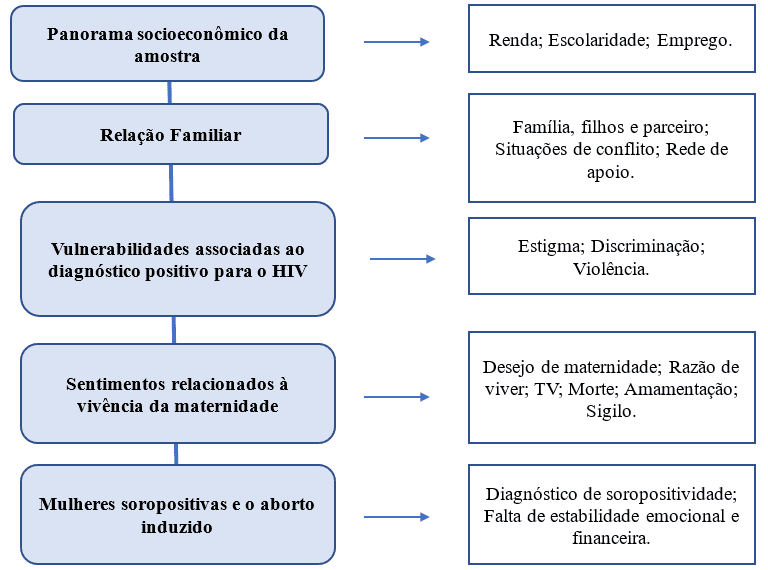
2.2 RESULTS
The profile of the studies included in the review shows 24.14% of publications in international journals, 48.28% from Nursing considering the area of training of the first authors and, in 68.97%, the interview was the main collection technique adopted.
In the category Socioeconomic Overview, fourteen studies (FERNANDES et al., 2017; GALVÃO et al., 2009; GONÇALVES et al., 2013; MATÃO; MIRANDA; FREITAS, 2014; MONTEIRO et al., 2016; MOURA; PRAÇA, 2006; MOURA; LIMA; SILVA, 2012; NASCIMENTO et al., 2013; PINTO et al., 2017; PREUSSLER; EIDT, 2007; SILVEIRA; SILVEIRA; MÜLLER, 2016; TEIXEIRA et al., 2017; VASCONCELOS et al., 2006; ZIHLMANN; ALVARENGA, 2015) reported the absence of paid activities or the description of low income as the predominant socioeconomic profile. As for education, thirteen studies (EID; WEBER; PIZZINATO, 2015; FERNANDES et al., 2017; GALVÃO et al., 2009; MATÃO; MIRANDA; FREITAS, 2014; MONTEIRO et al., 2016; MOURA; PRAÇA, 2006; MOURA; LIMA; SILVA, 2012; NASCIMENTO et al., 2013; PINTO et al., 2017; SILVEIRA; SILVEIRA; MÜLLER, 2016; TEIXEIRA et al., 2017; VASCONCELOS et al., 2006; ZIHLMANN; ALVARENGA, 2015) pointed out that the women who made up the sample reported low schooling. It is worth mentioning the importance attributed to educational training by the adolescent population, which sees the topic as something secondary and not very relevant, with employment as its main target (BARBOSA et al., 2012; EID; WEBER; PIZZINATO, 2015).
Regarding the Family Relationship category, fourteen studies (FERNANDES et al., 2017; GONÇALVES et al., 2013; MATÃO; MIRANDA; FREITAS, 2014; MEDEIROS; JORGE, 2018; MONTEIRO et al., 2016; MOURA; PRAÇA, 2006; MOURA; LIMA; SILVA, 2012; NEVES; GIR, 2006; PINTO et al., 2017; PREUSSLER; EIDT, 2007; SANT’ANNA; SEIDL, 2009; SANTOS et al., 2012; SILVEIRA; SILVEIRA; MÜLLER, 2016; VILLELA et al., 2012) report a predominance of fixed and heterosexual affective sexual partnership among WLHIV. Nine studies (EID; WEBER; PIZZINATO, 2015; GALVÃO et al., 2009; GONÇALVES et al., 2013; MOURA; LIMA; SILVA, 2012; NEVES; GIR, 2006; SANT’ANNA; SEIDL, 2009; SANT’ANNA; SEIDL; GALINKIN, 2008; SILVEIRA; SILVEIRA; MÜLLER, 2016; VASCONCELOS et al., 2006; ZIHLMANN; ALVARENGA, 2015) showed that women were infected by their partners. In five of them (EID; WEBER; PIZZINATO, 2015; GALVÃO; CUNHA; MACHADO, 2010; SANT’ANNA; SEIDL, 2009; SANT’ANNA; SEIDL; GALINKIN, 2008; VASCONCELOS et al., 2006), there is a report that the discovery took place only after the onset of the disease in the spouse.
The family relationship is seen as fundamental for many women and constitutes the basis of the support network. Some studies (FARIA; PICCININI, 2015; GONÇALVES et al., 2013; MEDEIROS; JORGE, 2018; MOURA; PRAÇA, 2006; PREUSSLER; EIDT, 2007; SANT’ANNA; SEIDL, 2009; SANTOS et al., 2012) point to that for WLHIV, the health of the child and the family takes precedence over their own. This is reflected in greater adherence to the use of ART during pregnancy (MOURA; PRAÇA, 2006; PREUSSLER; EIDT, 2007; SANTOS et al., 2012; SILVEIRA; SILVEIRA; MÜLLER, 2016; SPINDOLA et al., 2015). Thirteen studies (BERTAGNOLI; FIGUEIREDO, 2017; EID; WEBER; PIZZINATO, 2015; FARIA; PICCININI, 2015; FERNANDES et al., 2017; GALVÃO et al., 2009; MEDEIROS; JORGE, 2018; MOURA; PRAÇA, 2006; MOURA ; LIMA; SILVA, 2012; NASCIMENTO et al., 2013; SANTOS et al., 2012; SPINDOLA et al., 2015; VASCONCELOS et al., 2006; ZIHLMANN; ALVARENGA, 2015) who explored the topic of motherhood, concluded that the children represent the reason for living or the continuity of existence for WLHIV. Another point identified is the frequent association of children with the consolidation of affective bonds and the realization of an organizational structure of the family (BERTAGNOLI; FIGUEIREDO, 2017; GALVÃO et al., 2009; GONÇALVES et al., 2013; MEDEIROS; JORGE, 2018; SANT’ANNA; SEIDL; GALINKIN, 2008; SANTOS; BISPO JÚNIOR, 2011; SANTOS et al., 2012). However, living with HIV during pregnancy can contribute to the creation of intense expectations and the fear of vertical transmission can generate feelings of overprotection (FERNANDES et al., 2017; GALVÃO et al., 2009; GONÇALVES et al., 2013; SANTOS; BISPO JÚNIOR, 2011; SANTOS et al., 2012), or even fear of testing the child after birth (MEDEIROS; JORGE, 2018; SANT’ANNA; SEIDL; GALINKIN, 2008)
Another key point emphasized in two studies (EID; WEBER; PIZZINATO, 2015; PINTO et al., 2017) concerns the pregnancy of HIV-positive women in the context of adolescence, which showed a great lack of family preparation to deal with issues related to sexuality.
The studies included in the Vulnerabilities associated with a positive diagnosis for HIV category, suggest that women become vulnerable especially for cultural and social reasons (GONÇALVES et al., 2013; MEDEIROS; JORGE, 2018; MOURA; LIMA; SILVA, 2012; NASCIMENTO et al., 2013; NEVES; GIR, 2006; PREUSSLER; EIDT, 2007; SANT’ANNA; SEIDL; GALINKIN, 2008; SILVEIRA; SILVEIRA; MÜLLER, 2016; TEIXEIRA et al., 2017; VILLELA et al., 2012) , which lead to passivity over prevention itself or the false security created by the belief in monogamy (EID; WEBER; PIZZINATO, 2015; GALVÃO; CUNHA; MACHADO, 2010; MEDEIROS; JORGE, 2018; MONTEIRO et al., 2016; PREUSSLER; EIDT, 2007; ZIHLMANN; ALVARENGA, 2015).
An extremely important question concerns how WLHIV see themselves as vehicles for transmitting the virus. From this point of view, they come to understand sexual intercourse as something dangerous and negative, choosing to abstain from sexual intercourse, ignoring their right to the free exercise of sexuality (GALVÃO et al., 2009; MOURA; LIMA; SILVA, 2012; SANT’ANNA; SEIDL, 2009).
Some studies (BERTAGNOLI; FIGUEIREDO, 2017; EID; WEBER; PIZZINATO, 2015; FARIA; PICCININI, 2015; GALVÃO et al., 2009; MEDEIROS; JORGE, 2018; MONTEIRO et al., 2016; MOURA; LIMA; SILVA, 2012; NEVES; GIR, 2006; PREUSSLER; EIDT, 2007; SANT’ANNA; SEIDL, 2009; SANT’ANNA; SEIDL; GALINKIN, 2008; SILVEIRA; SILVEIRA; MÜLLER, 2016; SPINDOLA et al., 2015; TEIXEIRA et al., 2017) described the perception of WLHIV in the experience of social stigma, and even professional stigma (FERNANDES et al., 2017; PREUSSLER; EIDT, 2007). Two studies (EID; WEBER; PIZZINATO, 2015; MONTEIRO et al., 2016) showed that pregnant women living with HIV report the occurrence of discrimination in the labor market and, consequently, are afraid of losing their jobs due to the presence of infection and pregnancy. (MONTEIRO et al., 2016). Four studies (BERTAGNOLI; FIGUEIREDO, 2017; MONTEIRO et al., 2016; ROMANELLI et al., 2007; TEIXEIRA et al., 2017) reported that WLHIV suffered some type of violence in the family or in the marital relationship linked to the discovery of status serological.
The analysis carried out revealed that the lack of information about the real risks of HIV generates an overload of stress in the lives of HIV-positive women (EID; WEBER; PIZZINATO, 2015; FARIA; PICCININI, 2015; FERNANDES et al., 2017; MOURA; PRAÇA, 2006; MOURA; LIMA; SILVA, 2012; NASCIMENTO et al., 2013; PREUSSLER; EIDT, 2007), which can corroborate harm to physical and psychological well-being, and even to the abandonment of prenatal care and , after childbirth (EID; WEBER; PIZZINATO, 2015), in the difficulty in creating a bond with the child (MOURA; LIMA; SILVA, 2012).
In the Feelings in relation to the experience of motherhood category, the studies indicated themes such as daily life, death, fear, breastfeeding and sexuality. Regarding the desire for motherhood, the positive diagnosis for HIV did not affect the desire to be a mother for most women (BERTAGNOLI; FIGUEIREDO, 2017; FARIA; PICCININI, 2015; GALVÃO et al., 2009; GONÇALVES et al., 2013; MATÃO; MIRANDA; FREITAS, 2014; MOURA; PRAÇA, 2006; MOURA; LIMA; SILVA, 2012; NASCIMENTO et al., 2013; NEVES; GIR, 2006; PINTO et al., 2017; SANT’ANNA; SEIDL, 2009; SANT’ANNA; SEIDL; GALINKIN, 2008; SANTOS; BISPO JÚNIOR, 2011; SPINDOLA et al., 2015; TEIXEIRA et al., 2017; ZIHLMANN; ALVARENGA, 2015). However, some declared that they wanted to be mothers but gave up after the diagnosis (FARIA; PICCININI, 2015; MATÃO; MIRANDA; FREITAS, 2014; MOURA; LIMA; SILVA, 2012; SANT’ANNA; SEIDL, 2009; SANT’ANNA; SEIDL; GALINKIN, 2008; SPINDOLA et al., 2015), due to the perception of the social stigma in which the pregnancy of an WLHIV is seen as an act of selfishness and irresponsibility (FARIA; PICCININI, 2015; FERNANDES et al., 2017; MOURA; LIMA; SILVA, 2012; PREUSSLER; EIDT, 2007; SANT’ANNA; SEIDL; GALINKIN, 2008; SANTOS; BISPO JÚNIOR, 2011; SILVEIRA; SILVEIRA; MÜLLER, 2016; SPINDOLA et al., 2015; ZIHLMANN; ALVARENGA, 2015), in addition to the fear of being held responsible for their children’s illness (GONÇALVES et al., 2013; SANTOS; BISPO JÚNIOR, 2011).
Fear was a recurring theme in several studies, and in nine of them (BERTAGNOLI; FIGUEIREDO, 2017; EID; WEBER; PIZZINATO, 2015; GONÇALVES et al., 2013; MEDEIROS; JORGE, 2018; NASCIMENTO et al., 2013; PINTO et al., 2017; SANTOS; BISPO JÚNIOR, 2011; SANTOS et al., 2012; SPINDOLA et al., 2015) pregnant women reported fearing for their future and that of the child, due to the perception of discrimination, the risk of opportunistic diseases and of the occurrence of death. Four studies (MOURA; LIMA; SILVA, 2012; NASCIMENTO et al., 2013; PREUSSLER; EIDT, 2007; SPINDOLA et al., 2015) reported the emergence of negative feelings during pregnancy, linked to the fear of the effects of infection on her life and her son’s life.
With regard to issues related to daily life, many WLHIV resorted to denying the disease as a way of protecting against discrimination and seeking to maintain the “normality” of their life routine (BERTAGNOLI; FIGUEIREDO, 2017; EID; WEBER; PIZZINATO, 2015; FARIA; PICCININI, 2015; GONÇALVES et al., 2013; NEVES; GIR, 2006; PREUSSLER; EIDT, 2007; SPINDOLA et al., 2015). Five studies (FARIA; PICCININI, 2015; GONÇALVES et al., 2013; MEDEIROS; JORGE, 2018; MOURA; LIMA; SILVA, 2012; VASCONCELOS et al., 2006) revealed that psychological changes are common in some contexts of living with HIV, such as during the first pregnancy. However, two studies (FARIA; PICCININI, 2015; NASCIMENTO et al., 2013) addressed the reduction of stress and anxiety in later pregnancies.
The discourse on death was present in several of the analyzed studies, which also demonstrates the perception of the strong correlation between infection and the expectation of imminent death (FARIA; PICCININI, 2015; MONTEIRO et al., 2016; NEVES; GIR, 2006; PREUSSLER; EIDT, 2007; SANT’ANNA; SEIDL, 2009; SANT’ANNA; SEIDL; GALINKIN, 2008; SANTOS et al., 2012). It is important to highlight that, in a study (BERTAGNOLI; FIGUEIREDO, 2017), the fear of death was not configured as a driver for adherence to treatment. On the other hand, two studies (NEVES; GIR, 2006; SPINDOLA et al., 2015) showed that hope in the discovery of a cure is a motivating factor for some women.
Pregnancy, according to WLHIV, appears as something sublime, as a challenge to the stigma of death associated with infection (GONÇALVES et al., 2013; MONTEIRO et al., 2016; MOURA; PRAÇA, 2006; SANTOS et al., 2012). They tend to place their dreams and hope for continuity on the child generated and, even in cases where the children are diagnosed with HIV after birth, they believe that they will have a longer and better survival time, due to early discovery and timely assistance (SANTOS et al., 2012). The discovery of pregnancy acts in the resignification of the infection, which allows the construction of new life motivations (SANTOS et al., 2012), or even a feeling of gratitude towards the future child, when the discovery of HIV occurs during pregnancy (SANTOS et al., 2012). FARIA; PICCININI, 2015). However, fear of VT is prominent in more than half of the studies (BERTAGNOLI; FIGUEIREDO, 2017; EID; WEBER; PIZZINATO, 2015; FARIA; PICCININI, 2015; GALVÃO et al., 2009; GONÇALVES et al., 2013; MONTEIRO et al., 2016; MOURA; PRAÇA, 2006; NASCIMENTO et al., 2013; PINTO et al., 2017; PREUSSLER; EIDT, 2007; ROMANELLI et al., 2007; SANT’ANNA; SEIDL, 2009; SANT’ANNA ; SEIDL; GALINKIN, 2008; SANTOS; BISPO JÚNIOR, 2011; SILVA; ALVARENGA; AYRES, 2006; SILVEIRA; SILVEIRA; MÜLLER, 2016; SPINDOLA et al., 2015; VILLELA et al., 2012; ZIHLMANN; ALVARENGA, 2015) . However, in fourteen studies (BERTAGNOLI; FIGUEIREDO, 2017; FARIA; PICCININI, 2015; GALVÃO et al., 2009; GONÇALVES et al., 2013; MOURA; PRAÇA, 2006; NEVES; GIR, 2006; PINTO et al., 2017; PREUSSLER; EIDT, 2007; ROMANELLI et al., 2007; SANT’ANNA; SEIDL, 2009; SANTOS; BISPO JÚNIOR, 2011; SANTOS et al., 2012; SPINDOLA et al., 2015; ZIHLMANN; ALVARENGA, 2015) the desire for the birth of a healthy child is categorically affirmed by MVHIV.
Regarding breastfeeding, its inhibition is a triggering factor for negative feelings (EID; WEBER; PIZZINATO, 2015; FARIA; PICCININI, 2015; FERNANDES et al., 2017; GALVÃO et al., 2009; GONÇALVES et al., 2013; NASCIMENTO et al., 2013; NEVES; GIR, 2006; PINTO et al., 2017; SANT’ANNA; SEIDL; GALINKIN, 2008; SANTOS; BISPO JÚNIOR, 2011; SPINDOLA et al., 2015; TEIXEIRA et al., 2017; VILLELA et al., 2012). Questions made by society about non-breastfeeding result in the fear of breaking confidentiality about the infection. The appreciation of breastfeeding as a source of bond between mother and baby in society’s speeches generates the fear of having less love from the child, caused by the absence of it (GONÇALVES et al., 2013).
Regarding confidentiality, in the analyzed studies, its preservation was linked to the fear of abandonment, stigma and discrimination, and was pointed out as a justification for some cases of isolation and loneliness (EID; WEBER; PIZZINATO, 2015; FARIA; PICCININI, 2015; FERNANDES et al., 2017; GONÇALVES et al., 2013; MOURA; LIMA; SILVA, 2012; PREUSSLER; EIDT, 2007; SANT’ANNA; SEIDL, 2009; SANT’ANNA; SEIDL; GALINKIN, 2008; SANTOS et al., 2012). In eight studies (EID; WEBER; PIZZINATO, 2015; FARIA; PICCININI, 2015; MEDEIROS; JORGE, 2018; MOURA; LIMA; SILVA, 2012; PREUSSLER; EIDT, 2007; SANT’ANNA; SEIDL, 2009; SANT’ANNA; SEIDL; GALINKIN, 2008; SPINDOLA et al., 2015), WLHIV reported a concern to keep their serological status confidential, including for their partner, family and friends, and in some cases, only health professionals knew the diagnosis.
The studies present in the HIV positive women and induced abortion category highlighted the factors that lead WLHIV to undergo an induced abortion. Of the twenty-eight studies, five (BARBOSA et al., 2012; MATÃO; MIRANDA; FREITAS, 2014; PREUSSLER; EIDT, 2007; SANT’ANNA; SEIDL; GALINKIN, 2008; VILLELA et al., 2012) reported that thinking or having an abortion occurred soon after the diagnosis was discovered, by women who were unaware of their serological status. Among those who were HIV positive and had an abortion, they related the decision to their serological status and to a history of domestic violence. Two studies (MATÃO; MIRANDA; FREITAS, 2014; VILLELA et al., 2012) showed that poverty and HIV are the trigger for these women to have an abortion.
2.3 DISCUSSION
The socioeconomic context of low income and schooling are factors present in the life scenario of WLHIV. When we analyzed data from the world literature on the subject, we identified that this vulnerability factor is recurrent and striking in the scenario of feminization of infection (COMINS et al., 2020; MPINGANJIRA et al., 2020; RAHMALIA et al., 2020). In view of this, for the assistance provided to WLHIV to be effective, its focus must go beyond the biological profile of the infection, prioritizing the biopsychosocial dimensions, and providing comprehensive care.
With regard to schooling, the devaluation of formal education is worrying, especially among adolescents living with HIV. Low education contributes to reducing the possibilities of entering the labor market, favoring the occupation of jobs with precarious remuneration, which require little or no professional qualification (COMINS et al., 2020; MITCHELL et al., 2020).
Another factor refers to discrimination against HIV-positive people by the labor market. The frequency of medical appointments and the use of multiple medications are used as a justification for not hiring or firing when the diagnosis becomes known. Discrimination and prejudice contribute to the withdrawal of WLHIV from the labor market, due to the unfounded belief that treatment requires frequent absence from work activities. Consequently, financial autonomy for subsistence is compromised (KISIGO et al., 2020; MITCHELL et al., 2020).
Sexual intercourse among heterosexual women is the main route of infection in Brazil, currently, corresponding to 86.5% of cases, according to the Ministry of Health (BRASIL, 2019), with the predominant monogamous relationship among this population. It is worth reflecting that in addition to not being a protective factor, monogamy in this scenario can even be categorized as a risk factor, due to the low use of condoms among steady couples.
The support network (family, friends and health professionals) plays a key role in maintaining the well-being of WLHIV(KISIGO et al., 2020; MPINGANJIRA et al., 2020). The feeling of security and acceptance contribute to greater care for their own health and pregnancy. The presence of the support network has a decisive influence on adherence to clinical treatment and ART, as well as prenatal care (COLMENERO et al., 2020; KISIGO et al., 2020).
Another fundamental point refers to the role of the child in the family axis. The arrival of a child brings a new configuration to affective bonds, in addition to the consolidation of family relationships. Motherhood creates the expectation of a safe and cozy social place, which allows women to experience their social and leisure activities in a more restricted way to the family environment (LELLYAWATY; ASTUTI; SATRIYANDARI, 2020; COLMENERO et al., 2020; DUVIVIER et al., 2020).
Fear about the well-being of the child is present in the lives of WLHIV, which is often associated with the lack of knowledge about ways of transmitting the virus, causing feelings of overprotection of the child to be created (COLMENERO et al., 2020; MPINGANJIRA et al., 2020). Testing the child after birth is recommended and is rarely not done. However, exceptions require attention from the care team, as they often result from maternal neglect and are justified by religious beliefs, hope for a cure, or fear of the diagnostic result. For the same reasons, some mothers do not treat their child correctly, which can contribute to harm to the child’s health (DUVIVIER et al., 2020).
Confidentiality about the infection is an ethical obligation of the health professional and impacts on the maintenance of the routine in the life of WLHIV, since guaranteeing it contributes to the promotion of autonomy and protection of the intimacy of the person living with HIV. The guarantee of secrecy is a right provided for by law: in the Code of Ethics of Nursing Professionals, in Resolution nº 311, of February 8, 2007 (COFEN, 2007), in the fundamental principles of the Brazilian Constitution of 1988 (BRASIL, 1988) and in the Penal Code – Decree – Law nº 2.848, of December 7, 1940 (BRASIL, 1940), classifying the violation of secrecy as a crime.
The lack of dialogue about sexuality and contraception and the difficulty of accessing health services are conditions that increase the vulnerability of young people, in general, to the occurrence of unplanned pregnancies or co-infections with other Sexually Transmitted Infections (STIs) (COLMENERO et al., 2020; COMINS et al., 2020; MAHAMBORO et al., 2020). Dialogue on sexual and reproductive health can contribute to the prevention of unwanted pregnancy, as well as to the experience of sexuality in a safe and conscious way, especially among the adolescent population living with HIV (COMINS et al., 2020). The difficulty of accessing quality information on sexual and reproductive health is something shared between adolescents and WLHIV.
Associated with insufficient and restricted information, there is difficulty in accessing various contraceptive methods and guidance on proper use. Such difficulties make the need to negotiate the use of the male condom common, which is often stressful and in vain (COMINS et al., 2020; RAHMALIA et al., 2020; WILSON et al., 2020). Therefore, the main route of infection among women is through sexual intercourse and most pregnancies occur unplanned (RAHMALIA et al., 2020).
Seropositivity impacts women’s sexual life, causing changes in the regularity of sexual activities, decreased libido, or even abstention, even in the presence of desire. Factors such as the discovery of the disease, lack of sexual partnership and fear of transmission, added to self-prejudice and self-punishment, lead to changes in sexual activity patterns (COLMENERO et al., 2020).
The lack of knowledge about the new condition can contribute to an overload of emotions. These become even more intense when such diagnosis occurs during pregnancy, generating a high load of stress due to the lack of understanding about the reflexes of the infection and treatment on the process. The performance of the multidisciplinary team is fundamental as support and source of safe and updated information, observed that the abandonment of prenatal consultations can harm the well-being of the mother-baby binomial, and constitutes a potential public health problem (LELLYAWATY; ASTUTI; SATRIYANDARI; 2020; DUVIVIER et al., 2020).
The occurrence of violence, of any nature, negatively affects the physical, mental, sexual and reproductive health of WLHIV, especially in a context of vulnerability marked by the discovery of their serological status (RAHMALIA et al., 2020). The image of MVHIV as offenders, promiscuous, impure, marked with a risk condition and segregated to restricted spaces is present in the social imagination (COLMENERO et al., 2020). When we associate motherhood in the presence of HIV, various feelings and challenges are established in the life of the woman and her family, influencing or not the desire to have children.
Social stigma permeates these women’s desires for children, due to the view of HIV infection as an incurable disease with a chance of VT. Based on the social view that motherhood of WLHIV is an act of irresponsibility and selfishness, many of these women give up their reproductive rights, for fear of being held responsible if the virus is transmitted during pregnancy (LELLYAWATY; ASTUTI; SATRIYANDARI, 2020; DUVIVIER et al., 2020; HERNANDES et al., 2019; MAHAMBORO et al., 2020). It is not uncommon that upon receiving the diagnosis, WLHIV have negative feelings and resort to denial of their serological status. In this context, the support network is essential for the mental health of WLHIV, reducing the risk of emotional disorders, such as depression (LELLYAWATY; ASTUTI; SATRIYANDARI, 2020; HERNANDES et al., 2019; MAHAMBORO et al., 2020; SANTOS et al., 2019).
Although AIDS-related mortality has decreased from 5.8 to 4.4 per 100,000 inhabitants in Brazil (BRASIL, 2019), there is still a strong imaginary association between infection and imminent death. This perception is present when the woman receives the diagnosis, causing a confrontation between life and death in her imagination. For pregnant women, this confrontation is still associated with the fear of transmitting or not being able to take care of the child. However, after an adequate care approach, it is possible to reframe the diagnosis, based on the understanding of the disease and ART (COLMENERO et al., 2020; HERNANDES et al., 2019). However, even so, some women choose not to adhere to treatment. This fact is related to multiple factors, such as: discomfort from long-term therapy, side effects of ART, lack of access to services close to their homes, fear of breach of confidentiality, among others (MPINGANJIRA et al., 2020).
Belief in a deity, in HIV infection as any disease, and in the hope of cure, are some of the strategies adopted to face the diagnosis (SANTOS et al., 2019). The adoption of coping strategies is in line with the normalization of feelings of hopelessness and the occurrence of depression, pointed out as common in MVHIV and contributes to achieving a better quality of life (HERNANSAIZ; TAPIA, 2020).
The experience of pregnancy for WLHIV raises a series of questions and dilemmas linked to changes in biological, emotional, psychological and social processes. This situation has a great emotional influence when these women are faced with the possibility of transmitting the virus or facing difficulties in creating an affective bond with their child (LELLYAWATY; ASTUTI; SATRIYANDARI, 2020; COLMENERO et al., 2020; COMINS et al., 2020). In this context, it is of fundamental importance to clarify the forms of transmission, to offer emotional, psychological and instructive support, in order to relieve the overload of stress and anxiety, since greater adherence to treatment and prenatal care is observed when women are equipped with all information on the subject (LELLYAWATY; ASTUTI; SATRIYANDARI, 2020; DUVIVIER et al., 2020; HERNANSAIZ; TAPIA, 2020).
Breastfeeding is one of the most conflicting issues for WLHIV. VT can occur at different times, during pregnancy, labor, delivery or through breastfeeding. Studies address that breastfeeding is an act that permeates cultural, social and emotional aspects, considered one of the greatest symbols of motherhood and valued as a unique moment, which consolidates affective bonds between mother and baby, among the seronegative population. As a result, intense conflicts arise in this period, since, despite all these aspects, there are medical restrictions for WLHIV, which contraindicate breastfeeding (CAVALCANTE et al., 2021; COLMENERO et al., 2020; DUVIVIER et al., 2020; MPINGANJIRA et al., 2020).
Due to the impediment of breastfeeding, in conflict with the symbology of the act within society, often due to the non-disclosure of their diagnosis, WLHIV are charged for the absence of practice, being impelled to elaborate speeches that socially justify the absence of breastfeeding. The creation of justifications becomes necessary, since not breastfeeding can raise suspicions about seropositivity in the eyes of family and friends (CAVALCANTE et al., 2021; DUVIVIER et al., 2020).
Regarding abortion, it is observed that WLHIV who resorted to induced abortion, although seropositivity plays an important role in this decision, especially in a scenario of little knowledge about the infection, they did not do so only as a result of the diagnosis (CHIBANGO; MAHARAJ , 2018; WILSON et al., 2020). Other factors, such as the lack of emotional and financial stability and the recent discovery of serological status were identified as determinants of the decision. Many of the women who reported HIV as the main reason for having an abortion had other pregnancies after the diagnosis, which suggests that the HIV diagnosis does not pragmatically influence the end of the reproductive trajectory (CHIBANGO; MAHARAJ, 2018).
3. FINAL CONSIDERATIONS
This integrative literature review allowed us to consider that the perception of Brazilian WLHIVs about motherhood is permeated by ambiguous feelings such as the hope that the child is a sign of redemption and motivation to live and, fear, of not being able to participate in the child’s future or that she suffers from stigma and prejudice, if she becomes infected during the pregnancy process. Responding to the guiding question of this study, when we analyzed the perception about the possibility of having children, we observed that doubts about the infection, fear of social judgment and of health professionals, the anxiety that derives from the uncertainty of the future of their health and health of their child, are important issues that impact the lives of these women and contribute to increased stress in the experience of the pregnancy process. However, it is important to consider that, although it is immensely challenging for Brazilian WLHIV, the fact of living with HIV does not change the desire for motherhood, in most cases.
From the results, it was observed that WLHIV have important doubts about reproductive and sexual health related to the infection, however, they have difficulty in questioning and expressing themselves on these topics, due to the perception of stigma, prejudice and fear of being judged. The offer of humanized care, qualified listening without judgments and the qualification of care, free from discrimination and prejudice, favors the creation of a welcoming environment for WLHIV to express their desires in relation to sexuality and motherhood, allowing the professional to promote management of the proper care.
Studies like this one, which seek to understand the perception of WLHIV in different areas of their lives, are justified, when we find that the infection transcends the biology of the body, and produces extensive and important repercussions on psychosocial life. A comprehensive analysis of the meanings of the feminization of HIV infection, mainly due to the social impact that the infection has on women’s sexual and reproductive lives, can contribute to reducing the negative impact on their quality of life. From this analysis, we can reflect on the importance of qualitative studies in the field of public health, providing data for the basis of professional training, in order to contribute to the humanization of the care provided.
REFERENCES
BARBOSA, Regina M.; PINHO, Adriana A.; SANTOS, Naila S.; VILLELA, Wilza V. Exploring the relationship between induced abortion and HIV infection in Brazil. Reproductive Health Matters, vol. 20, no. sup39, p. 80–89, 22 Jan. 2012. DOI: 10.1016/S0968-8080(12)39633-X. Disponível em: https://pubmed.ncbi.nlm.nih.gov/23177683/. Acesso em: 02 Jun. 2021
BERTAGNOLI, Marina Simões Flório Ferreira; FIGUEIREDO, Marco Antônio Castro. Gestantes Soropositivas ao HIV: Maternidade, Relações Conjugais e Ações da Psicologia. Psicologia: Ciência e Profissão, vol. 37, no. 4, p. 981–994, Dec. 2017. DOI 10.1590/1982-3703004522016. Disponível em: http://www.scielo.br/scielo.php?script=sci_arttext&pid=S1414-98932017000400981&lng=pt&tlng=pt. Acesso em: 2 Jun. 2020.
BRASIL. Constituição da República Federativa do Brasil. Texto constitucional promulgado em 5 de outubro de 1988, com as alterações adotadas pelas Emendas Constitucionais nos 1/1992 a 91/2016, pelo Decreto Legislativo no 186/2008 e pelas Emendas Constitucionais de Revisão no1 a 6/1994. n. 1, p. 496, 1988. Disponível em: https://www2.senado.leg.br/bdsf/bitstream/handle/id/518231/CF88_Livro_EC91_2016.pdf. Acesso em: 20 Dec. 2021
BRASIL, Câmara dos Deputados. DECRETO-LEI No 2.848, DE 7 DE DEZEMBRO DE 1940. Emenda Constitucional no 95 de 2016. Altera o Ato das Disposições Constitucionais Transitórias, para instituir o Novo Regime Fiscal, e dá outras providências. Diário Oficial da União, n. 7, p. 187, 1940. Disponível em: https://www2.camara.leg.br/legin/fed/declei/1940-1949/decreto-lei-2848-7-dezembro-1940-412868-norma-pe.html. Acesso em: 20 Dec. 2020.
BRASIL, Ministério da Saúde. Secretaria de Vigilância em Saúde. Departamento de Doenças de Condições Crônicas e Infecções Sexualmente Transmissíveis – DCCI. Boletim Epidemiológico HIV / Aids | 2019. p. 72, 2019. Disponível em:
http://www.aids.gov.br/pt-br/pub/2019/boletim-epidemiologico-de-hivaids-2019. Acesso em: 05 Jun. 2021
CABIESES, Báltica; SEPÚLVEDA, Camila; OBACH, Alexandra. Prevention of vertical transmission of hiv in international migrant women: Current scenario and challenges. Revista Chilena de Pediatria, vol. 91, no. 5, p. 672–683, 2020. DOI 10.32641/rchped.vi91i5.1784. Disponível em: https://pubmed.ncbi.nlm.nih.gov/33399631/. Acesso em: 24 Jun. 2021
CAVALCANTE, Maria Almerice Espíndula da Silva; RODRIGUES, Sueli Teresinha Cruz; SANTOS, Amuzza Aylla Pereira dos; SANCHES, Maria Elisângela Torres de Lima; ALVES, Siane Mariano; SANTOS, Larissa Thaís Omena dos; ALVES, Tayse Lopes. The impact of HIV diagnosis on pregnancy or post birth and its effects on women’s life: integrativeliterature review. Research, Society and Development, vol. 10, no. 3, p. e17010313157, 11 Mar. 2021. DOI 10.33448/rsd-v10i3.13157. Disponível em: https://rsdjournal.org/index.php/rsd/article/view/13157. Acesso em: 18 Mar. 2021.
CHIBANGO, Vimbai; MAHARAJ, Pranitha. Men’s and women’s roles in decision making about abortion in the context of HIV. The European Journal of Contraception & Reproductive Health Care, vol. 23, no. 6, p. 464–470, 2 Nov. 2018. DOI: 10.1080/13625187.2018.1541078. Disponível em: https://www.tandfonline.com/doi/abs/10.1080/13625187.2018.1541078?journalCode=iejc20. Acesso em: 18 Jun. 2021.
COFEN, Conselho Federal de Enfermagem. Resolução COFEN-311/2007. Aprova a Reformulação do Código de Ética dos Profissionais de Enfermagem. 2007. Conselho Federal de Enfermagem. Disponível em: http://www.cofen.gov.br/resoluo-cofen-3112007_4345.html. Acesso em: 18 Jun. 2021
COLMENERO, Tomás Arias; MORENTE, Ma Ángeles Pérez; MORCILLO, Antonio Jesús Ramos; DÍAZ, Concepción Capilla; MARTÍNEZ, María Razafa; MONTORO, César Hueso. Experiences and attitudes of people with HIV/AIDS: A systematic review of qualitative studies. International Journal of Environmental Research and Public Health, vol. 17, no. 2, p. 639, 2 Jan. 2020. DOI 10.3390/ijerph17020639. Disponível em: www.mdpi.com/journal/ijerph. Acesso em: 17 Jun. 2021.
COMINS, Carly A.; RUCINSKI, Katherine B.; BARAL, Stefan; ABEBE, Samuele A.; MULU, Andargachew; SCHWARTZ, Sheree R. Vulnerability profiles and prevalence of HIV and other sexually transmitted infections among adolescent girls and young women in Ethiopia: A latent class analysis. PLoS ONE, vol. 15, no. 5, p. e0232598, 1 May 2020. DOI 10.1371/journal.pone.0232598. Disponível em: https://journals.plos.org/plosone/article?id=10.1371/journal.pone.0232598. Acesso em: 17 Jun. 2021.
DUVIVIER, Hélène; DECROO, Tom; NELSON, Aurélie; CASSIDY, Tali; MBAKAZ, Zodwa; DURAN, Laura Trivino; DE AZEVEDO, Virginia; SOLOMON, Suhair; VENABLES, Emilie. Knowledge transmission, peer support, behaviour change and satisfaction in post Natal clubs in Khayelitsha, South Africa: a qualitative study. Reproductive Health, vol. 17, no. 1, p. 107, 8 Dec. 2020. DOI 10.1186/s12978-020-00957-0. Disponível em: https://doi.org/10.1186/s12978-020-00957-0. Acesso em: 18 Jun. 2021.
EID, Ana Paula; WEBER, João Luis Almeida; PIZZINATO, Adolfo. Maternity and life plans among young people infected with HIV by vertical transmission. Revista latinoamericana de Ciencias Sociales, Niñez y Juventud, vol. 13, no. 2, p. 937–950, 31 Jul. 2015. DOI 10.11600/1692715x.13227100214. Disponível em: http://revistalatinoamericanaumanizales.cinde.org.co/?page_id=5086. Acesso em: 16 Jun. 2021
FARIA, Evelise Rigoni; PICCININI, Cesar Augusto. Representações maternas no contexto do HIV: Gestação ao segundo ano da criança. Psicologia em Estudo, vol. 20, no. 4, p. 625, 2015. DOI 10.4025/psicolestud.v20i4.28749. Disponível em:
http://www.periodicos.uem.br/ojs/index.php/PsicolEstud/article/view/28749. Acesso em: 10 Jun. 2021
FERNANDES, Petra Kelly Rabelo de Sousa; MIRANDA, Karla Corrêa Lima; RODRIGUES, Dafne Paiva; VASCONCELOS, Léa Dias Pimentel Gomes. Revelação diagnóstica para o HIV no pré-natal: dificuldades e estratégias de enfrentamento das mulheres. Revista Enfermagem UERJ, vol. 25, p. e12114, 2017. DOI 10.12957/reuerj.2017.12114. Disponível em: https://pesquisa.bvsalud.org/portal/resource/pt/biblio-947661. Acesso em: 10 Jun. 2021
GALVÃO, Marli Teresinha Gimeniz; CUNHA, Gilmara Holanda da; MACHADO, Márcia Maria Tavares. Dilemas e conflitos de ser mãe na vigência do HIV/Aids. Revista Brasileira de Enfermagem, vol. 63, no. 3, p. 371–376, Jun. 2010. DOI 10.1590/S0034-71672010000300004. Disponível em: http://www.scielo.br/scielo.php?script=sci_arttext&%5Cnpid=S0034-71672010000300004. Acesso em: 01 Jun. 2021
GEERTZ, Clifford. A Interpretação das Culturas. 13a. Rio de Janeiro: LTC, 2008. p.323/vol. 263. Disponível em: http://orton.catie.ac.cr/cgi-bin/wxis.exe/?IsisScript=BIBA.xis&method=post&formato=2&cantidad=1&expresion=mfn=000243.
GONÇALVES, Valéria Freire; TEIXEIRA, Danielle Queiroz; OLIVEIRA, Patricia Farias;; SOUSA, Taynná Holanda Sousa. Mulheres soropositivas para o HIV: Compreensão, Sentimentos e Vivência. Rev Bras Promoc Saude, vol. 26, no. 3, p. 281–289, 2013. Disponível em: https://periodicos.unifor.br/RBPS/article/view/2918. Acesso em: 18 Jun. 2021
HERNANDES, Cristiane Pimentel; ROCHA, Rafaela Kuczynski da; HAUSMANN, Andrey; APPELT, Jhenifer Bibiana; MARQUES, Cassiano de Mattos. Qualitative analysis of feelings and knowledge’s about pregnancy and HIV in seropositive and seronegative pregnant women. J. Health Biol. Sci. (Online), vol. 7, no. 1, p. 32–40, 2019. DOI 10.12662/2317-3076jhbs.v6i4.2211.p32-40.2019. Disponível em: https://periodicos.unichristus.edu.br/jhbs/article/view/2211. Acesso em: 16 Jun. 2021
HERNANSAIZ, Helena Garrido; TAPIA, Jesús Alonso. Predictors of anxiety and depression among newly diagnosed people living with HIV: A longitudinal study. Scandinavian Journal of Psychology, vol. 61, no. 5, p. 616–624, 1 Oct. 2020. DOI 10.1111/sjop.12621. Disponível em: https://onlinelibrary.wiley.com/doi/10.1111/sjop.12621. Acesso em: 21 Jun. 2021.
KISIGO, Godfrey A.; NGOCHO, James S; KNETTEL, Brandon A; OSHOSEN, Martha; MMBAGA, Blandina T; WATT, Melissa H. “At home, no one knows”: A qualitative study of retention challenges among women living with HIV in Tanzania. PLOS ONE, vol. 15, no. 8, p. e0238232, 27 Aug. 2020. DOI 10.1371/journal.pone.0238232. Disponível em: https://journals.plos.org/plosone/article?id=10.1371/journal.pone.0238232. Acesso em: 21 Jun. 2021
LELLYAWATY, L. ASTUTI, Dhesi Ari; SATRIYANDARI, Yekti. The Pregnancy Experience Among Women With HIV: A Literature Review. Jurnal Ners dan Kebidanan Indonesia, vol. 7, no. 2, p. 118–126, 27 Mar. 2020. DOI: 10.21927/jnki.2019.7(2).118-126. Disponível em: http://dx.doi.org/10.21927/jnki.2019.7. Acesso em: 18 Jun. 2021.
LIBERATI, Alessandro; ALTMAN, Douglas G.; TETZLAFF, Jennifer; MULROW, Cynthia; GØTZSCHE, Peter C.; IOANNIDIS, John P.A.; CLARKE, Mike; DEVEREAUX, P. J.; KLEIJNEN, Jos; MOHER, David. The PRISMA Statement for Reporting Systematic Reviews and Meta-Analyses of Studies That Evaluate Health Care Interventions: Explanation and Elaboration. Annals of Internal Medicine, vol. 151, no. 4, p. W, 18 Aug. 2009. DOI 10.7326/0003-4819-151-4-200908180-00136. Disponível em:
https://www.sciencedirect.com/science/article/pii/S0895435609001802. Acesso em: 12 Sep. 2018.
MAHAMBORO, Dionius B.; FAUK, Nelsensius K.; WARD, Paul R.; MERRY, Maria S.; SIRI, Theodorus A.; MWANRI, Lillian. HIV stigma and moral judgement: Qualitative exploration of the experiences of HIV stigma and discrimination among married men living with HIV in Yogyakarta. International Journal of Environmental Research and Public Health, vol. 17, no. 2, p. 636, 2 Jan. 2020. DOI 10.3390/ijerph17020636. Disponível em: www.mdpi.com/journal/ijerph. Acesso em: 17 Jun. 2021.
MATÃO, Maria Eliane Liégio; MIRANDA, Denismar Borges; FREITAS, Maria Imaculada de Fátima. Between desire , duty and fear of being a mother after HIV seropositivity. Enfermería Global, vol. 13, no. 34, p. 453–466, 2014. Disponível em:
https://pesquisa.bvsalud.org/portal/resource/pt/ibc-121747. Acesso em: 18 Jun. 2021.
MEDEIROS, Diego da Silva; JORGE, Maria Salete Bessa. A invenção da vida na gestação: viver com HIV/aids e a produção do cuidado. Sexualidad, Salud y Sociedad (Rio de Janeiro), no. 30, p. 242–261, 2018. DOI 10.1590/1984-6487.sess.2018.30.12.a. Disponível em: https://www.scielo.br/scielo.php?script=sci_abstract&pid=S1984-64872018000300242&lng=pt&nrm=iso. Acesso em: 1 Jun. 2021.
MINAYO, Maria Cecília de Souza; DESLANDES, Suely Ferreira; GOMES, Romeu. Pesquisa Social : teoria, método e criatividade. Editora Vozes, Petrópolis, ed. 1a re, p. 80, 2018.
MITCHELL, Elke; LAZUARDI, Elan; ANINTYA, Irma; ROWE, Emily; WHITFORD, Kate; WIRAWAN, Dewa N.; WISAKSANA, Rudi; SUBRONTO, Yanri W.; PRAMESWARI, Hellen D.; KALDOR, John; BELL, Stephen. A Qualitative Exploration of Family, Work, Community, and Health Service Influences on HIV Treatment Uptake and Adherence Among Female Sex Workers in Three Cities in Indonesia. AIDS Education and Prevention, vol. 32, no. 3, p. 243–259, 4 Jun. 2020. DOI 10.1521/aeap.2020.32.3.243. Disponível em: https://guilfordjournals.com/doi/abs/10.1521/aeap.2020.32.3.243. Acesso em: 17 Jun. 2021.
MONTEIRO, Simone; VILLELA, Wilza; FRAGA, Livia; SOARES, Priscilla; PINHO, Adriana. A dinâmica da produção de estigma relacionado à AIDS entre gestantes vivendo com HIV/AIDS no Rio de Janeiro, Brasil. Cadernos de Saúde Publica, vol. 32, no. 12, p. 1–11, 2016. DOI 10.1590/0102-311X00122215. Disponível em: https://www.scielo.br/scielo.php?script=sci_arttext&pid=S0102-311X2016001205001. Acesso em: 21 Jun. 2021
MORGAN, Laura; CARRIER, Judith; EDWARDS, Deborah. Men’s perceptions of the impact of the physical consequences of radical prostatectomy on their quality of life: a qualitative systematic review protocol. The JBI Database of Systematic Reviews and Implementation Reports, vol. 13, no. 12, p. 37–46, 2016. DOI 10.11124/jbisrir-2015-2408. Disponível em: http://joannabriggslibrary.org/index.php/jbisrir/article/view/2408%5Cn. Acesso em: 05 Jan. 2021.
MOURA, Edilene Lins de; PRAÇA, Neide de Souza. Transmissão vertical do HIV: expectativas e ações da gestante soropositiva. Revista Latino-am Enfermagem, vol. 14, no. 3, p. 405–413, 2006. DOI 10.1590/S0104-11692006000300015. Disponível em:
https://www.scielo.br/scielo.php?pid=S0104-11692006000300015&script=sci_abstract&tlng=pt. Acesso em: 03 Mar. 2021.
MOURA, Escolástica Rejane Ferreira; LIMA, Danielle Moreira de Castro; SILVA, Raimunda Magalhães da. Aspectos sexuais e perspectivas reprodutivas de mulheres com HIV/aids, o que mudou com a soropositividade. Revista Cubana de Enfermeria, vol. 28, no. 1, p. 37–48, 2012. Disponível em: http://scielo.sld.cu/scielo.php?script=sci_abstract&pid=S0864-03192012000100005&lng=es&nrm=iso&tlng=pt. Acesso em: 3 Jun. 2020.
MPINGANJIRA, S.; TCHERENI, T.; GUNDA, A.; MWAPASA, V. Factors associated with loss-to-follow-up of HIV-positive mothers and their infants enrolled in HIV care clinic: A qualitative study. BMC Public Health, vol. 20, no. 1, p. 298, 6 Dec. 2020. DOI 10.1186/s12889-020-8373-x. Disponível em: https://link.springer.com/articles/10.1186/s12889-020-8373-x. Acesso em: 17 Jun. 2021.
NASCIMENTO, Cristiane Silva; NERY, Inez Sampaio; RODRIGUES, Ivalda Silva; CARVALHO PEREIRA, Lívia; SILVA RODRIGUES, Ivalda; MAYRA BEZERRA, Myrna; SEPÚLVEDA GOMES, Ivanilda. Desejo de maternidade frente ao diagnóstico de Síndrome da Imunodeficiência Adquirida. Revista Baiana de Enfermagem, vol. 27, no. 3, p. 239–248, 2013. Disponível em: http://search.ebscohost.com/login.aspx?direct=true&db=fua&AN=108774174&lang=es&site=ehost-live. Acesso em: 18 Jun. 2021.
NEVES, Lis Aparecida de Souza; GIR, Elucir. Crenças das mães soropositivas ao HIV acerca da transmissão vertical da doença. Revista Latino-Americana de Enfermagem, vol. 14, no. 5, p. 781–788, Oct. 2006. DOI 10.1590/S0104-11692006000500021. Disponível em: http://www.scielo.br/scielo.php?script=sci_arttext&pid=S0104-11692006000500021&lng=en&tlng=en. Acesso em: 03 Jun. 2021
ORGANIZAÇÃO MUNDIAL DA SAÚDE. Mulheres e Saúde: evidências de hoje, agenda de amanhã. Organização Mundial de Saúde, p. 112, 2009.
PINTO, Margaret Daros; MAIA, Gabriela Nunes; PEREIRA, Marco Daniel; LEVANDOWSKI, Daniela Centenaro. Mães adolescentes que vivem com o HIV: uma investigação qualitativa sobre a “Constelação da Maternidade”. Psicol. clin., vol. 29, no. 3, p. 381–401, 2017. Disponível em: http://pepsic.bvsalud.org/scielo.php?script=sci_abstract&pid=S0103-56652017000300003&lng=pt&nrm=iso. Acesso em: 29 May 2020.
PREUSSLER, Gisele Maria Inchauspe;; EIDT, Olga Rosaria. Vivenciando as adversidades do binômio gestação e hiv/aids. Revista Gaúcha de Enfermagem, vol. 28, no. 1, p. 117–125, 2007. Disponível em: https://seer.ufrgs.br/RevistaGauchadeEnfermagem/article/view/4707. Acesso em: 03 May. 2021
RAHMALIA, Annisa; POHAN, Mawar Nita; WISAKSANA, Rudi; LAGA, Marie; GRIETENS, Koen Peeters. “No good man will ever want me”. How structural social inequality increases women’s vulnerability to HIV transmission: a qualitative study from Bandung, Indonesia. AIDS Care, , p. 1–8, 4 Aug. 2020. DOI 10.1080/09540121.2020.1801980. Disponível em: https://www.tandfonline.com/action/journalInformation?journalCode=caic20. Acesso em: 17 Jun. 2021.
ROMANELLI, Roberta M C; CARDOSO, Carolina S; LIN, Elisa; GOULART, Lúcia H F; AMÉLIA, Regina; AGUIAR, L P; PINTO, Jorge A. Experiências referentes à contracepção por mulheres sabidamente infectadas pelo HIV que engravidam. DST – J bras Doenças Sex Transm, vol. 19, no. 1, p. 16–21, 2007. Disponível em: http://cpa.sites.uff.br/wp-content/uploads/sites/303/2018/01/r19-1-2007-3.pdf. Acesso em: 18 Jun. 2021.
SANT’ANNA, Ana Carolina Cunha; SEIDL, Eliane Maria Fleury. Efeitos da condição sorológica sobre as escolhas reprodutivas de mulheres HIV positivas. Psicologia: Reflexão e Crítica, vol. 22, no. 2, p. 244–251, 2009. DOI 10.1590/S0102-79722009000200011. Disponível em: https://www.scielo.br/scielo.php?pid=S0102-79722009000200011&script=sci_abstract&tlng=pt. Acesso em: 05 Jun. 2021.
SANT’ANNA, Ana Carolina Cunha; SEIDL, Eliane Maria Fleury; GALINKIN, Ana Lúcia. Mulheres, soropositividade e escolhas reprodutivas. Estudos de Psicologia (Campinas), vol. 25, no. 1, p. 101–111, 2008. DOI 10.1590/S0103-166X2008000100010. Disponível em: https://www.scielo.br/scielo.php?script=sci_arttext&pid=S0103-166X2008000100010. Acesso em: 03 Jun. 2021.
SANTOS, Shirlei Ferreira Filgueiras dos; BISPO JÚNIOR, José Patrício. DESEJO DE MATERNIDADE ENTRE MULHERES COM HIV/AIDS. Revista Baiana de Saúde Pública, vol. 34, no. 2, p. 299, 2011. DOI 10.22278/2318-2660.2010.v34.n2.a36. Disponível em: http://www.rbsp.sesab.ba.gov.br/index.php/rbsp/article/view/36. Acesso em: 03 May. 2021
SANTOS, Francisco Dimitre Rodrigo Pereira; AMARAL, Leila Rute Oliveira Gurgel do; SANTOS, Marta Azevedo dos; FERREIRA, Adriana Gomes Nogueira; MOURA, Jónata Ferreira de; BRITO, Letícia Bezerra. Repercusiones de la espiritualidad en la vida de las mujeres que viven con el VIH. Revista Cuidarte, vol. 10, no. 3, p. 1–12, 13 Sep. 2019. DOI 10.15649/cuidarte.v10i3.711. Disponível em:
https://pesquisa.bvsalud.org/portal/resource/pt/biblio-1094646. Acesso em: 01 Jun. 2021
SANTOS, Walterlânia Silva; MEDEIROS, Marcelo; MUNARI, Denize Bouttelet; OLIVEIRA, Nunila Ferreira; MACHADO, Ana Rita Marinho. A Gravidez e a Maternidade na vida de mulheres após o diagnóstico do HIV/AIDS. Ciência, Cuidado E Saúde, vol. 11, no. 2, p. 250–258, 2012. DOI 10.4025/cienccuidsaude.v11i2.10476. Disponível em: http://www.periodicos.uem.br/ojs/index.php/CiencCuidSaude/article/view/10476. Acesso em: 06 Jan. 2021.
SILVA, Neide Emy Kurokawa; ALVARENGA, Augusta Thereza; AYRES, José Ricardo C. M. Aids e gravidez: os sentidos do risco e o desafio do cuidado. Revista de Saúde Pública, vol. 40, no. 3, p. 474–481, 2006. DOI 10.1590/S0034-89102006000300016. Disponível em: https://www.scielo.br/scielo.php?script=sci_abstract&pid=S0034-89102006000300016&lng=en&nrm=iso&tlng=pt. Acesso em: 03 Jun. 2021.
SILVEIRA, Marysabel Pinto Telis; SILVEIRA, Mariângela Freitas; MÜLLER, Cristina Heloisa. Qualidade de vida de gestantes vivendo com HIV/Aids. Revista Brasileira de Ginecologia e Obstetrícia, vol. 38, no. 5, p. 246–252, 2016. DOI 10.1055/s-0036-1584164. Disponível em: https://www.scielo.br/scielo.php?pid=S0100-72032016000500246&script=sci_arttext. Acesso em: 18 Jun. 2021.
SPINDOLA, Thelma; DANTAS, Karla Temístocles Brito; CADAVEZ, Natália Fernanda Vitipó; FONTE, Vinícius Rodrigues Fernandes; OLIVEIRA, Denize Cristina. Maternity perception by pregnant women living with HIV. Investigación y Educación en Enfermería, vol. 33, no. 3, p. 440–448, 2015. DOI 10.17533/udea.iee.v33n3a07. Disponível em: http://www.scielo.org.co/scielo.php?script=sci_arttext&pid=S0120-53072015000300007&lng=pt&nrm=iso&tlng=pt. Acesso em: 08 Jun. 2020
TEIXEIRA, Luciana Barcellos; PILECCO, Flávia Bulegon; VIGO, Álvaro; DE DRACHLER, Maria Lourdes; DE LEITE, José Carlos Carvalho; KNAUTH, Daniela Riva. Factors associated with post-diagnosis pregnancies in women living with HIV in the south of Brazil. PLoS ONE, vol. 12, no. 2, 1 Feb. 2017. DOI 10.1371/journal.pone.0172514. Disponível em: https://pubmed.ncbi.nlm.nih.gov/28222175/. Acesso em: 29 May 2020.
VASCONCELOS, Simone Gonçalves; GALVÃO, Marli Teresinha Gimeniz; AGUIAR, Maria Isis Freire;; BRAGA, Violante Augusta Batista. A percepção das gestantes ao lidar com a infecção pelo HIV? estudo exploratório. Online Brazilian Journal of Nursing, vol. 5, no. 1, p. 1–12, 2006. Disponível em: http://www.objnursing.uff.br/index.php/nursing/rt/printerFriendly/491/112. Acesso em: 17 May. 2020.
VILLELA, Wilza Vieira; BARBOSA, Regina Maria; PORTELLA, Ana Paula; OLIVEIRA, Luzia Aparecida de. Motivos e circunstâncias para o aborto induzido entre mulheres vivendo com HIV no Brasil. Ciência & Saúde Coletiva, vol. 17, no. 7, p. 1709–1719, Jul. 2012. DOI 10.1590/S1413-81232012000700009. Disponível em: https://www.scielo.br/scielo.php?script=sci_arttext&pid=S1413-81232012000700009. Acesso em: 16 Jun. 2021
WILSON, Andrea; MUSYOKI, Helgar; AVERY, Lisa; CHEUK, Eve; GICHANGI, Peter; BHATTACHARJEE, Parinita; MUSIMBE, Janet; LEUNG, Stella; BLANCHARD, James; MOSES, Stephen; MISHRA, Sharmistha; BECKER, Marissa. Sexual and reproductive health among adolescent girls and young women in Mombasa, Kenya. Sexual and Reproductive Health Matters, vol. 28, no. 1, p. 1749341, 1 Jan. 2020. DOI 10.1080/26410397.2020.1749341. Disponível em: https://www.tandfonline.com/action/journalInformation?journalCode=zrhm21. Acesso em: 18 Jun. 2021.
WOLFGANG, Simone M; PORTINARI, Denise B; FERREIRA, Patricia Castro. Campanhas educacionais de prevenção ao HIV no Brasil de 1987 a 2002. RECITE – Revista Carioca de Ciência Tecnologia e Educação, vol. 2, no. 1, 2017. DOI 10.17648/2596-058X-recite-v2n1-4. Disponível em: https://recite.unicarioca.edu.br/rccte/index.php/rccte/article/view/12. Acesso em: 03 Jun. 2021.
ZIHLMANN, Karina Franco; ALVARENGA, Augusta Thereza de. Que desejo é esse? Decisões reprodutivas entre mulheres vivendo com HIV/Aids sob o olhar da psicanálise. Saúde e Sociedade, vol. 24, no. 2, p. 633–645, 2015. DOI 10.1590/S0104-12902015000200019. Disponível em: https://www.scielo.br/scielo.php?pid=S0104-12902015000200633&script=sci_abstract&tlng=pt. Acesso em: 06 May. 2020.
[1] Master of Science (UNIFESP). Bachelor in Obstetrics (USP) and Biological Sciences (UNIP). ORCID: 0000-0002-4578-2224.
[2] Bachelor in Obstetrics (EACH-USP). ORCID: 0000-0003-3051-7484.
[3] Undergraduate student in Obstetrics (EACH-USP). ORCID: 0000-0003-3051-7484.
[4] PhD in Sciences (EEUSP). Bachelor of Nursing (UFU). ORCID: 0000-0003-3383-1540.
[5] Advisor. ORCID: 0000-0003-0075-2360.
Sent: October, 2021.
Approved: May, 2022.

